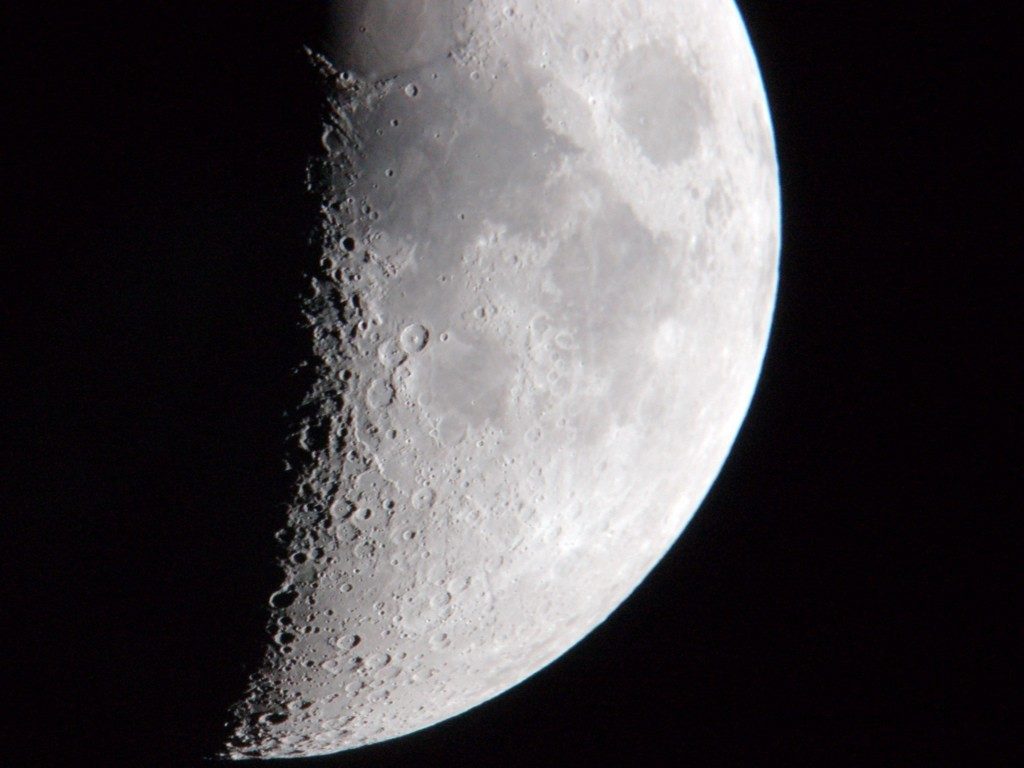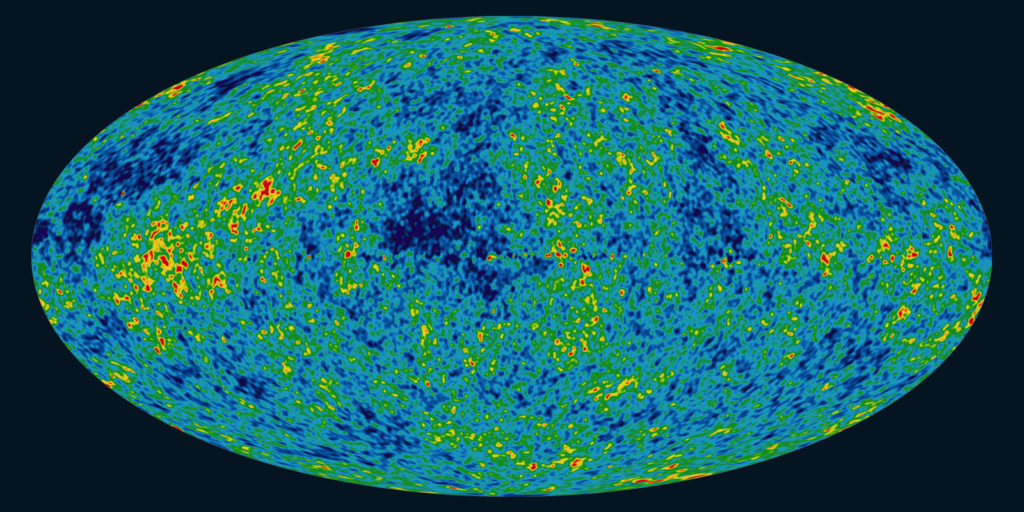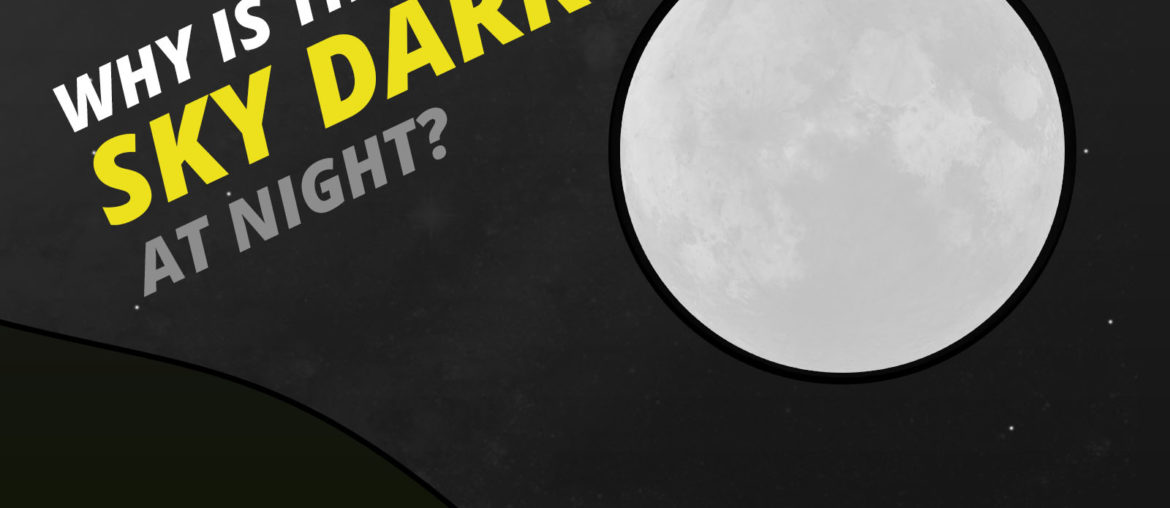It just seems so obvious to think of the night sky as something that just is dark. We have all experienced it like that since the day we were born, but have you have you ever looked up and wondered why is it dark? why does it look the way it does?. Well, thankfully for us, scientists were just as curious as you about this phenomenon and have come up with the answers.
The answer, however, is not that simple and will take us all the way to the beginning of the universe.
Table of contents
Article overview
- The black of the sky at night is the dark of space
- Space looks dark because the universe is expanding and light from far away stars hasn’t had time to reach us or is too weak
- The blue sky during the day is the atmosphere reacting to sunlight
Roses are red, Sky is blue. But why?

Let’s start by answering why the sky is blue during the day.
You might have heard Earth is surrounded by a layer of gases called atmosphere. The atmosphere is composed mostly of nitrogen and oxygen’s molecules and has multiple functions like protecting Earth from radiation and debris. It also provides the breathable environment that sustains life.
During the day, the Sun’s light directly hits the atmosphere, impacting these nitrogen and oxygen molecules. When this happens, blue light is scattered and this is why we perceive the sky as being blue.
This layer of color “hides” the stars and space behind even though they are all still there. If Earth didn’t have an atmosphere, the sky would still be black and you could see the stars even during the day, but we wouldn’t recommend it as we wouldn’t be able to breathe.
When the sun sets at night the sunlight no longer reacts with the atmosphere and this allows us to see the dark of space and the stars.
At sunrise and sunset, when the sunlight hits the atmosphere from a different position, it has to travel through more particles to reach your eyes and only the red and yellow light “survive”, which is why during these times of the day, the sky can look red or orange and the sun seems to have a yellow tone (please don’t look directly at the sun to prove this, it might hurt your eyes).
You might wonder finally why isn’t the sky blue at night too since there is still light coming from other stars and the light that is reflected by the moon. The answer to that is, this light is too weak to scatter any significant amount that our eyes can perceive, the effect does happen but it is usually too subtle. You can prove this by looking at a long-exposure photograph of the moon taken on a night when it looks brighter than usual. The sky around the moon will look blue-ish.
Got it, but why is space dark?

Let’s stop to think about something for a second. We have heard the universe is infinite. In an infinite universe, there would potentially be an infinite number of stars and that would mean there is a star in every direction you look at and their light would travel everywhere eventually covering up everything. In this scenario, space, and therefore our sky would be bright all the time. Simple observation tells us this is not true, but why? how come space is black instead of everything being bright as a star?
This question was asked by the German astronomer Heinrich Olbers and now is named after him.
Olber’s Paradox
A paradox is a statement that seems self-contradictory or in conflict with itself.
With our current understanding of the universe, there are two basic explanations that solve the puzzle of Olber’s paradox.
The question of “why isn’t the sky bright if there is an infinite number of stars?” makes some assumptions. For it to be true, the universe would have to be infinite, static and timeless. Thanks to discoveries from astronomers such as Edward Hubble (after whom the Hubble telescope is named) we now know the universe isn’t static or timeless.
Our current theory for the origin of the universe is the Big Bang. It says that at some point, a long time ago, all the universe was concentrated into a small, hot, dense ball which then burst, giving birth to the stars, planets and other celestial objects as we know them. The Big Bang theory also tells us the universe is constantly expanding (therefore, it’s not static) and galaxies are constantly moving away from each other.
Because the universe is expanding, all the light from stars and the Big Bang is slowly being stretched into wavelengths that our eyes can’t perceive. This is called Cosmic Microwave Background Radiation and it is all around us. We have managed to detect it and measure CMBR, further cementing the Big Bang as the correct theory for the beginning of the universe. If our eyes could see these frequencies, then we would see a sky as bright as our original question suggests.

The next piece to explain the dark of space is the age of the universe. Our best current approximation for how old is the universe is 13.7 billion years. While that is a long, long time for us humans, we believe the lifespan of some stars will be in the range of trillions of years, meaning our Universe would still be in a young stage.
Because the universe isn’t that old, that means there is a limit to how far we can “see” in it as the light from distant stars beyond this range hasn’t had time to reach us yet. This also adds up to the reasons why our sky isn’t brighter.
Summary
To summarize, this is what we have learned:
- Our sky is blue during the day because sunlight hits the atmosphere
- With no atmosphere, the sky would be black all the time, even during the day!
- The question of why isn’t space bright even if there’s is an infinite number of stars is called Obler’s Paradox.
- Obler’s Paradox has three solutions: 1) The universe is expanding 2) Light from the Big Bang has turned into invisible radiation 3) Light from distant stars hasn’t reached us yet.







